It Takes a Village to Raise a Fish Population
In a lush valley in Pakistan, community organizations and wildlife advocates are collaborating with a hydroelectric company to conserve the river they all depend on.

By Alison Buckholtz and Payam Akram. Multimedia by Ali Asad Zaidi. Design by Rayna Zhang and Julia Schmalz. Illustrations by Ivan Torres.
Most of the time, Saba Hafeez, a primary school teacher in Pakistan, instructs her students in the same subjects young children learn around the world: reading, math, science, and history.
Today, though, Hafeez is talking to her students about fish—a subject more real to them than anything in a textbook. That’s because they live in district Kotli, a lush, verdant valley in Pakistan that sits alongside the Poonch River. The 100 km (62 mile) long river, central to the lives and livelihoods of people in Kotli, is home to one of the largest freshwater fish on earth: the Mahseer, known as the national fish of Pakistan.
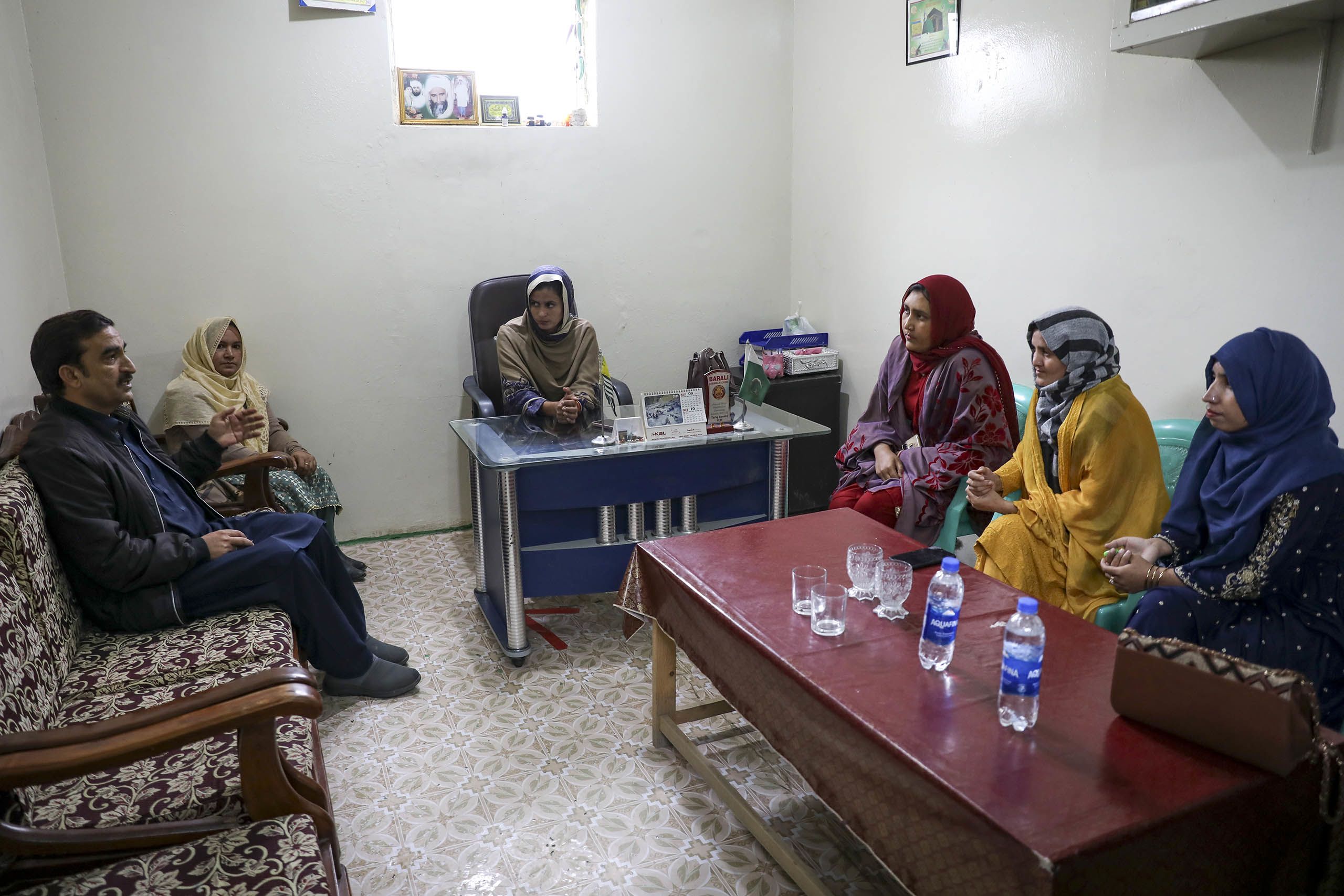
Teachers at a primary school in Kotli meet with the community liaison officer.
Teachers at a primary school in Kotli meet with the community liaison officer.
But the “Mighty Mahseer,” weighing in at up to 90.7 kg (about 200 lbs.), has become Endangered due to decades of illegal fishing and poor river conditions. To save the Mahseer—a species that’s critical to the local economy— the government designated the entire river a national park in 2010, triggering protective measures. At school, Hafeez shows her students how the river is a lifeline connecting their community to the resources it needs, and she tries to inspire them to become guardians of nature.
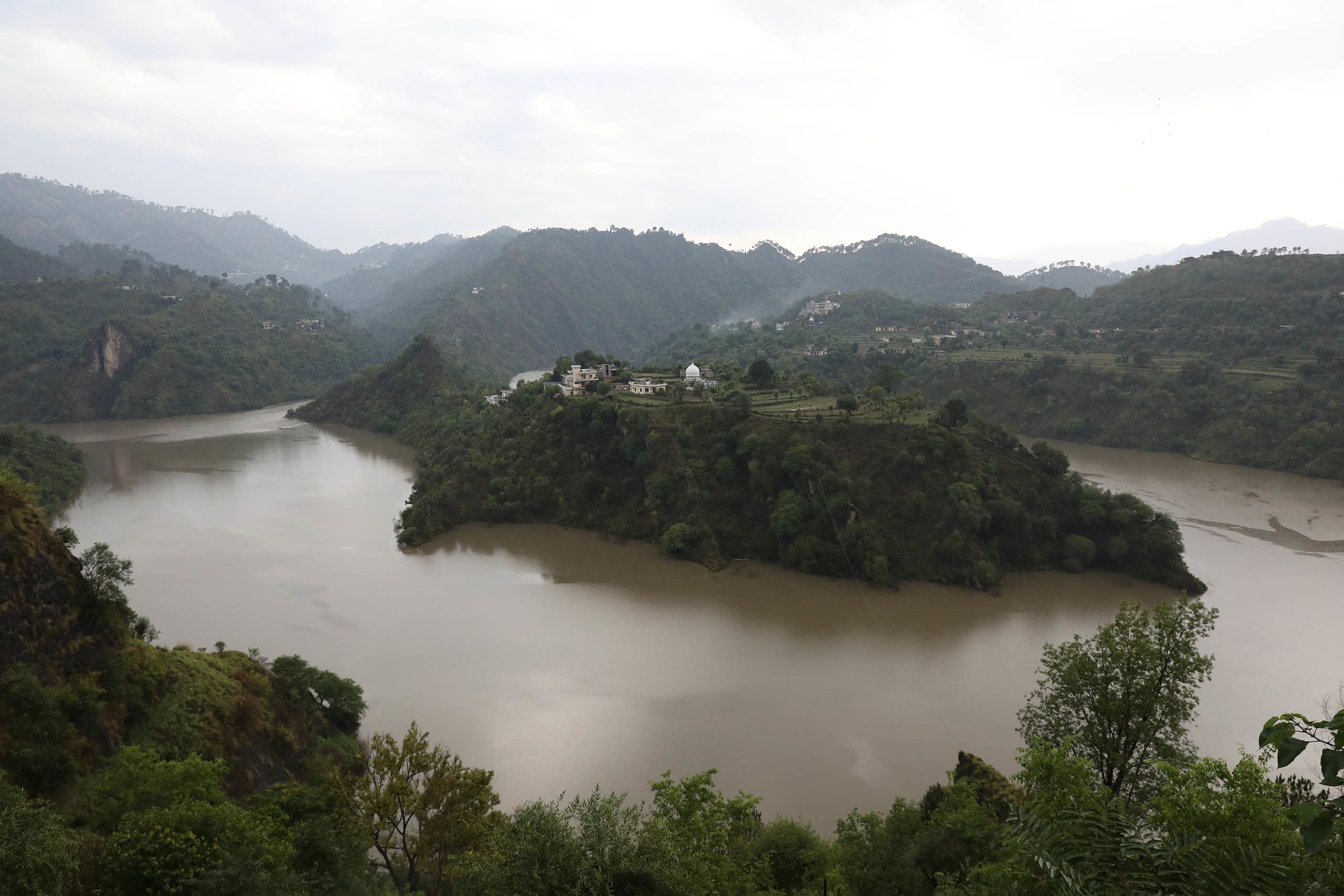
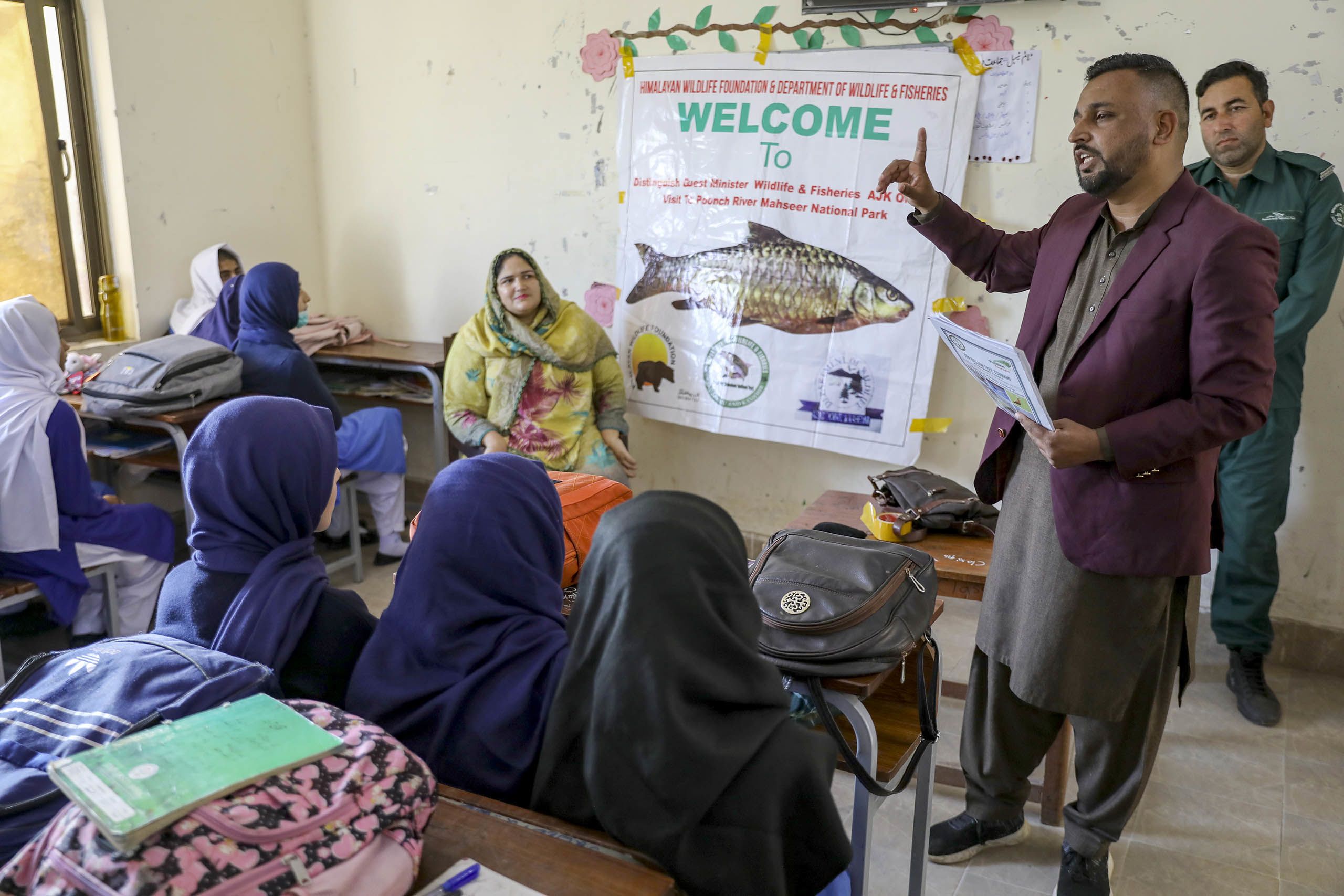
Awais Aslam - Social Mobilizer, Himalayan Wildlife Foundation conduct an awareness raising sessions in a government girls’ high school Gulpur, Kotli district.
Awais Aslam - Social Mobilizer, Himalayan Wildlife Foundation conduct an awareness raising sessions in a government girls’ high school Gulpur, Kotli district.
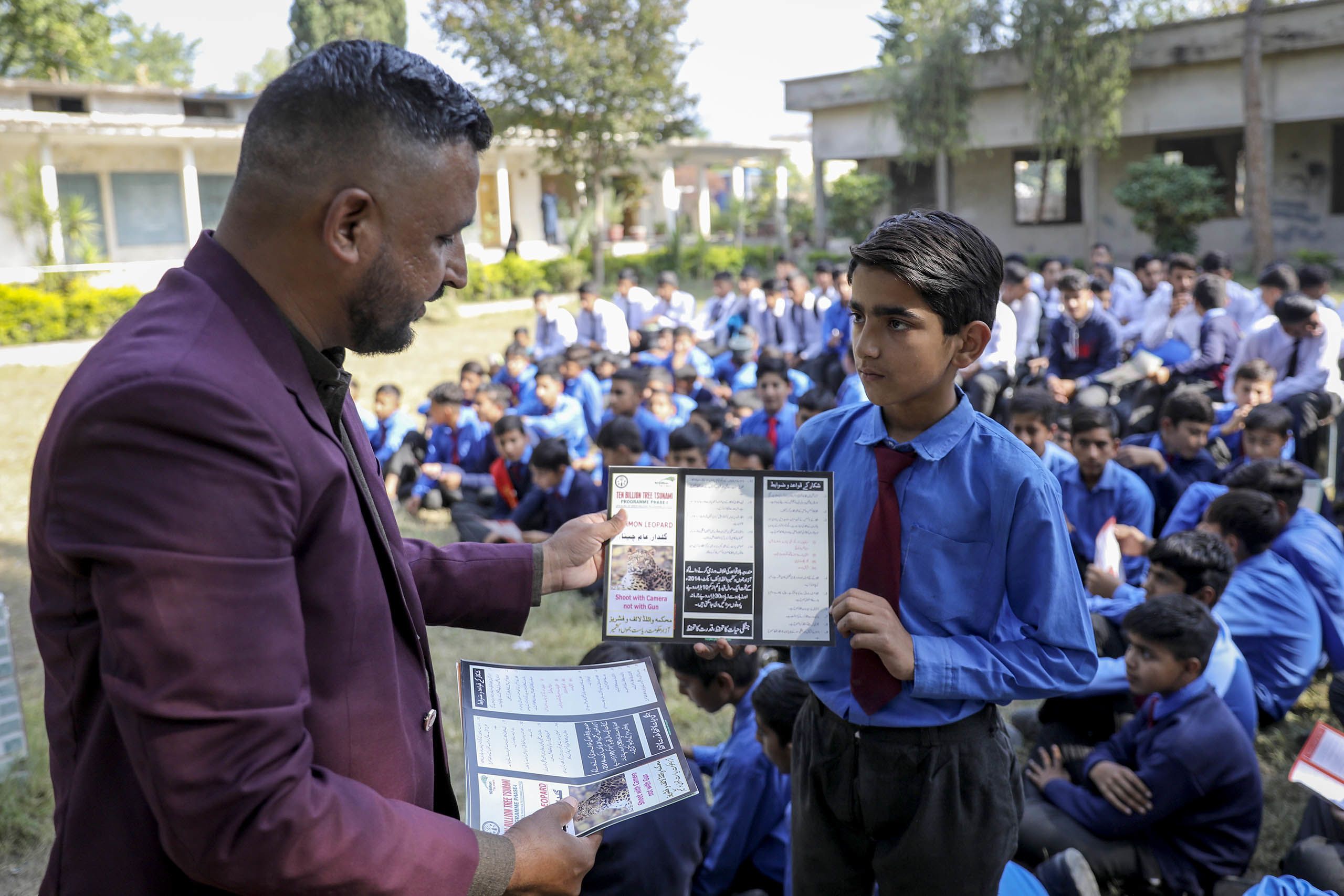
Awais Aslam - Social Mobilizer, Himalayan Wildlife Foundation conduct an awareness raising sessions in a government boys’ high school Gulpur, Kotli district.
Awais Aslam - Social Mobilizer, Himalayan Wildlife Foundation conduct an awareness raising sessions in a government boys’ high school Gulpur, Kotli district.
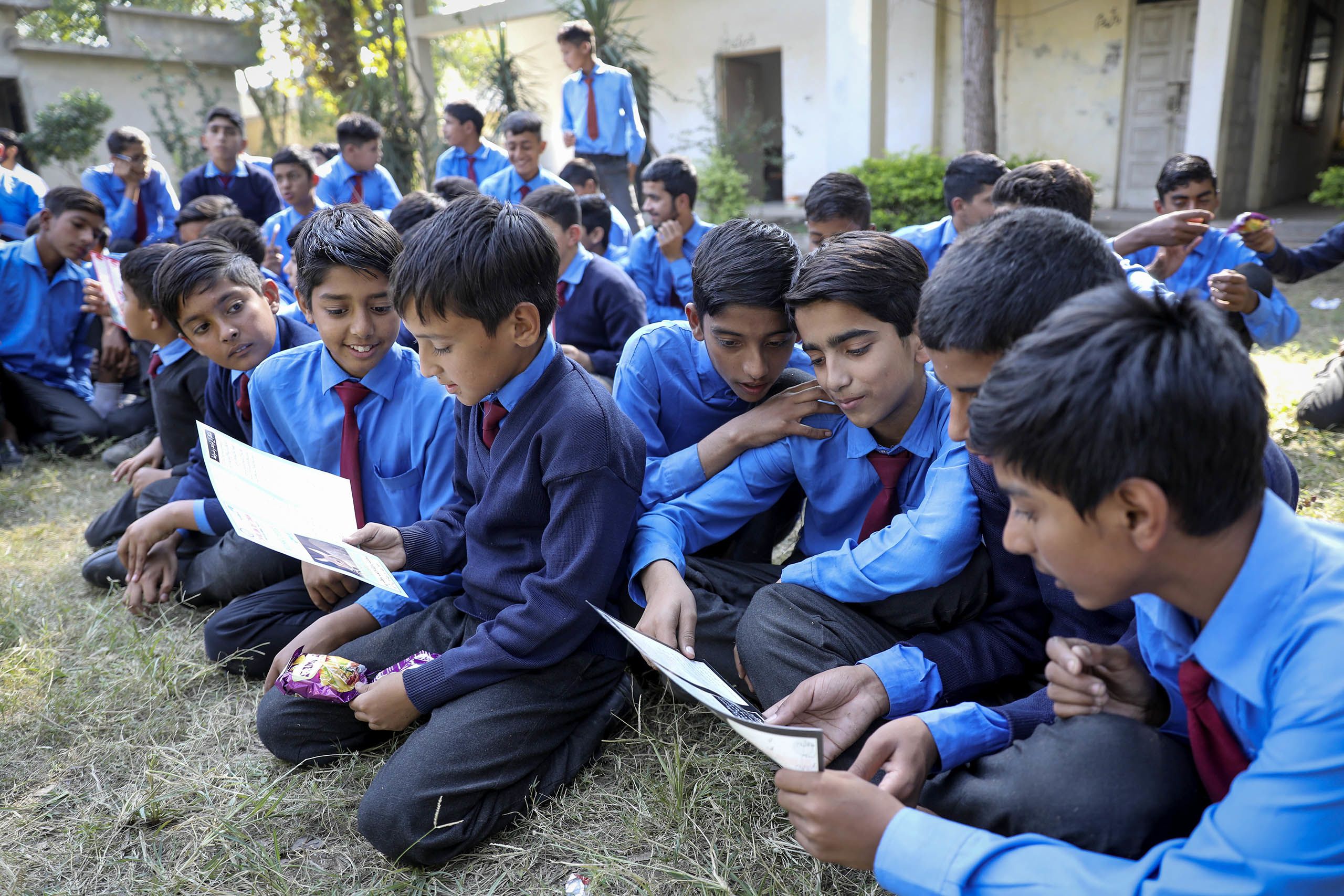
School boys learn about one of the largest freshwater fish on earth: the Mahseer, considered the national fish of Pakistan.
School boys learn about one of the largest freshwater fish on earth: the Mahseer, considered the national fish of Pakistan.
“Whatever we learn [about river upkeep], we try to communicate the same to our students as well,” Hafeez says. “I am certain by doing so, these students go on to inform their families,” multiplying the educational benefits.
Protecting the Mahseer is so important here that a community liaison officer sometimes visits Hafeez’s school to offer guidance on how to protect the fish and the water. That outreach is just one facet of a wide-ranging, community-based conservation initiative backed by Mira Power Limited, the company behind the Gulpur hydropower project, which began operating on the Poonch River in 2020.
Early on in the development of the hydropower project—created to provide clean energy to Pakistan’s national grid—the river basin in which the Mahseer and other native fish inhabit was considered Critical Habitat per the definitions of IFC's Environmental and Social Performance Standards. For this reason, IFC required the achievement of biodiversity “net gains” of these species and the development of a Biodiversity Action Plan.
Mira Power Limited, which exclusively oversees the comprehensive financial and implementation management of the Biodiversity Action Plan, has played a central role as a crucial stakeholder and a major driving force behind implementation of the Biodiversity Action Plan. “We have been committed from the start to effective execution of the Biodiversity Action Plan, and engaging broad support has been key,” says Han Seungnam, Chief Executive Officer, Mira Power Limited.
Since the Biodiversity Action Plan was launched, multiple initiatives, including wide-ranging community awareness programs and the placement of river guards to monitor illegal fishing, have helped increase the population of Mahseer from 25 percent to 65 percent, according to Hameed Iqbal Gorsi, District Supervisor for the local Wildlife & Fisheries Department.
As the construction of the Gulpur hydropower project progressed, the Biodiversity Action Plan has unfolded according to its original plan to manage biodiversity impacts. State government support and financial backing by Mira Power Limited, the company that operates the 102 MW Gulpur Hydropower Project, has been crucial. The state government has also opened a fish hatchery to minimize the impact of the Gulpur hydropower project.
That’s “a great win for biodiversity,” says Shoaib Ahmed, Technical Manager at Hagler Bailly Pakistan, an environmental firm that serves as an independent evaluator.
The project’s ecological wins were achieved with the collaboration of community groups, the government wildlife agency, Mira Power Limited, and the Himalayan Wildlife Foundation, with investment, technical support, and capacity-building from IFC. Such strategies are critical at a time when nearly one-third of the world’s freshwater fish are threatened with extinction due to climate change, overfishing, and poorly-planned dams. Migratory populations of fish (such as the Mahseer) have fallen by three-quarters in the last 50 years.
Gulpur hydropower project’s Biodiversity Action Plan offers lessons that could apply in a host of other cases where conservation is an issue and “should be replicated where it is important to protect biodiversity and conserve the environment,” says Mehboob Hussain, Project Manager at the Himalayan Wildlife Foundation.
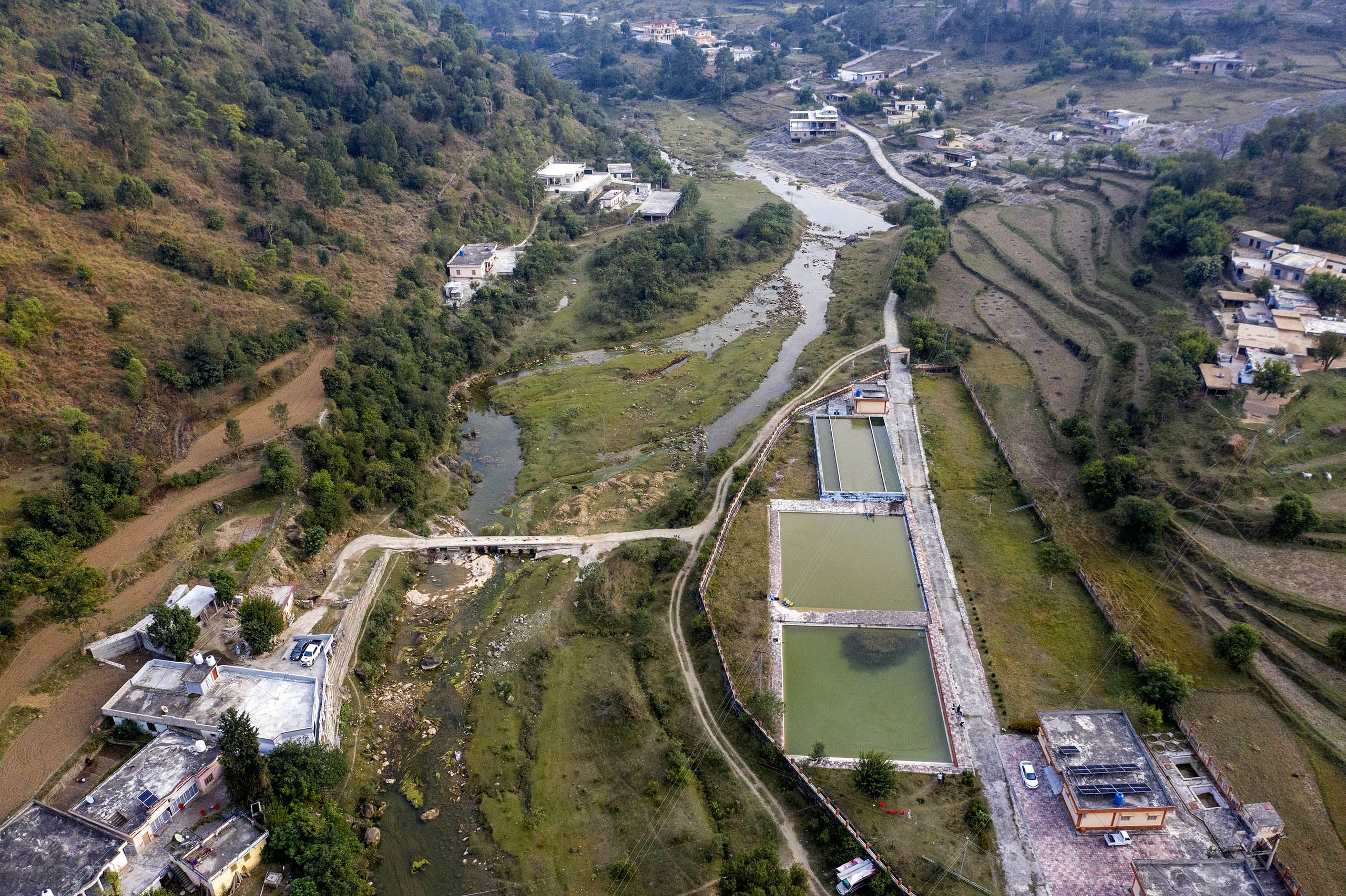

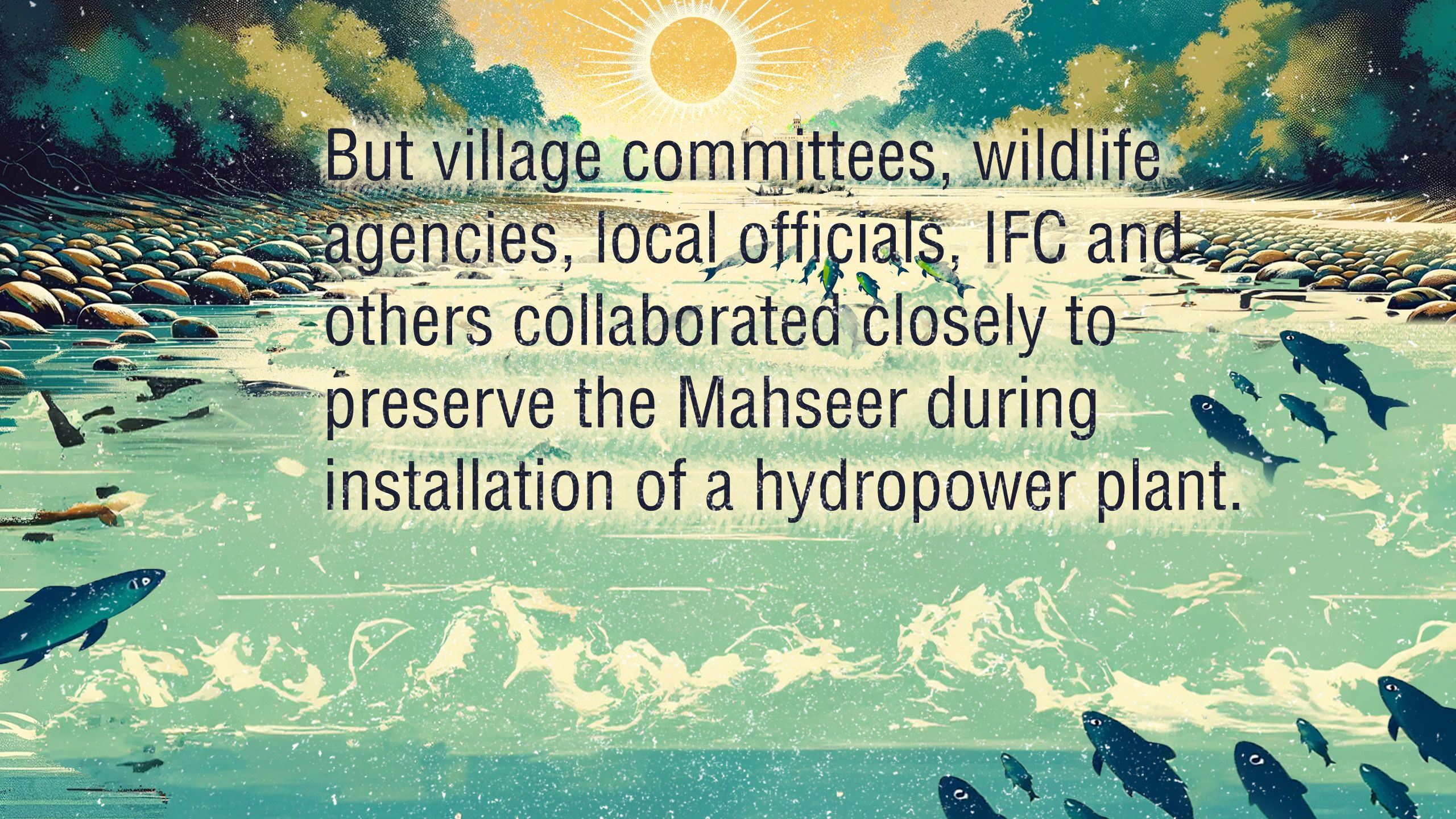


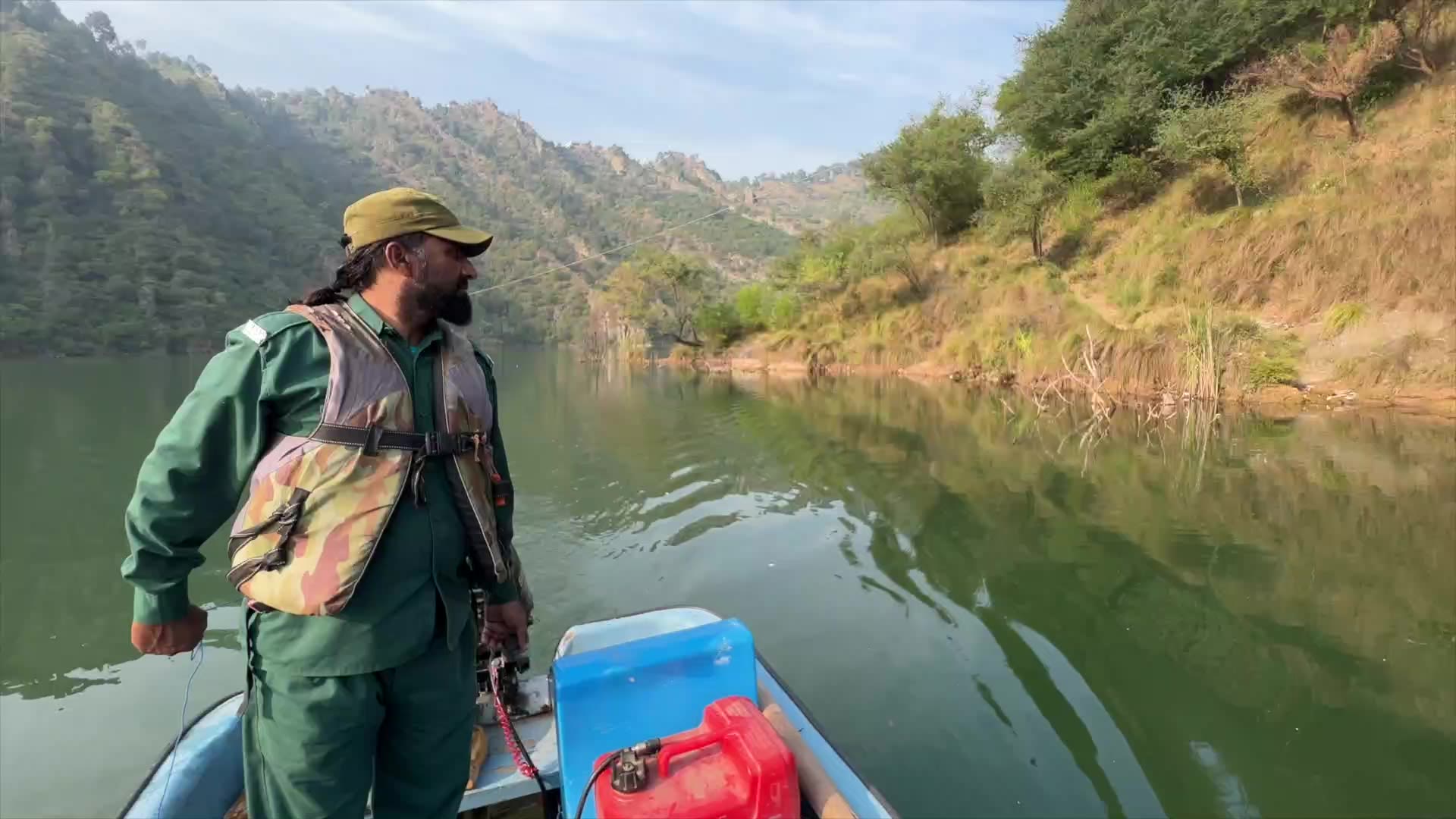
Community-focused efforts
Successful outcomes were far from certain when the plan was being developed. “The approach to biodiversity conservation and management had not been tested before in the country, and there were some significant risks associated with policies and capacities that had to be addressed to make it work,” says Vaqar Zakaria, Managing Director at Hagler Bailly Pakistan. “The project as it unfolded, through construction, commissioning, and operation, presented many unforeseen situations and challenges.”
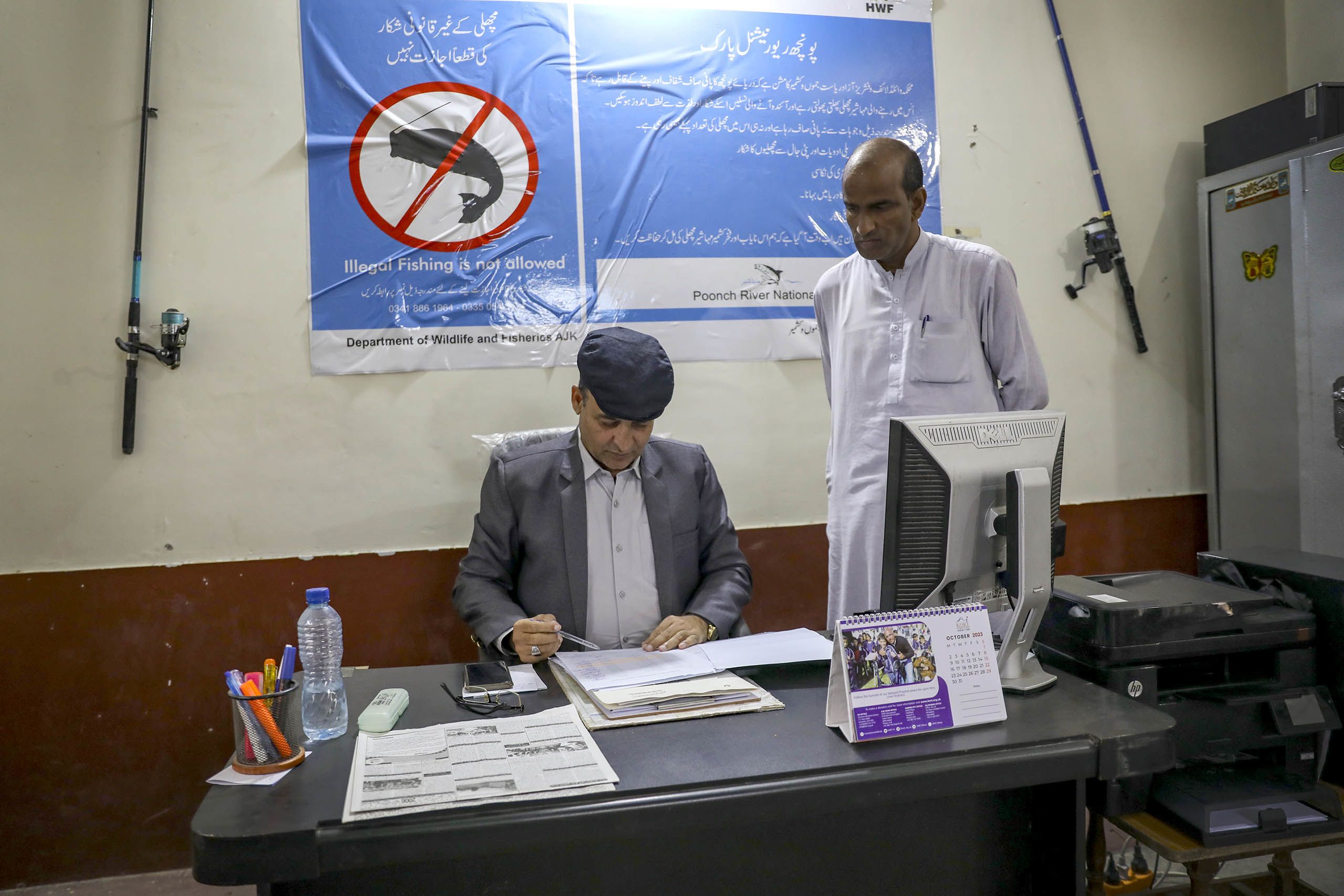
Mehboob Hussain, Project Manager, Himalayan Wildlife Foundation and Hameed Iqbal Gorsi, District Supervisor for Wildlife & Fisheries Department.
Mehboob Hussain, Project Manager, Himalayan Wildlife Foundation and Hameed Iqbal Gorsi, District Supervisor for Wildlife & Fisheries Department.
In the years since the Gulpur hydropower project was built, the Biodiversity Action Plan now has a momentum all its own. The close working relationships between Mira Power Limited, the Himalayan Wildlife Foundation, Hagler Bailly Pakistan, and the local Wildlife & Fisheries Department are key, says Hussain, from the Himalayan Wildlife Foundation. “Collaboration between all stakeholders is key towards the unified goal of safeguarding the river. But most of all, the fact that the project has successfully reached out to and enlisted the support of the community has helped make it a success.”
Community outreach has been tailored to respond closely to local people’s concerns. The efforts include educational posters noting the Mahseer’s breeding season and discouraging illegal fishing during that time; how to apply for fishing licenses during non-breeding periods; workshops on the long-term impact of conservation measures; and outreach to children like those in Hafeez’s classroom, and to village committees.
In addition to awareness-raising sessions, Awais Aslam, a social mobilizer with the Himalayan Wildlife Foundation, also manages conflicts and grievances within the community—even conducting in-home visits to help resolve pressing issues.
The change in the community’s attitude toward conservation principles, measured in part by the decline in illegal fishing, has been striking, according to Ahmed, from Hagler Bailly Pakistan. Regular polling of nearby residents also shows that their awareness of the fact that the river is now a national park has increased by 60 percent since the designation was made, helping to protect the area from illegal fishing.
“Before, [residents] considered the river area their personal property and resisted any conservation efforts because of that,” he says. “But I believe that now we have successfully conveyed the importance of conservation for their collective long-term benefit.”
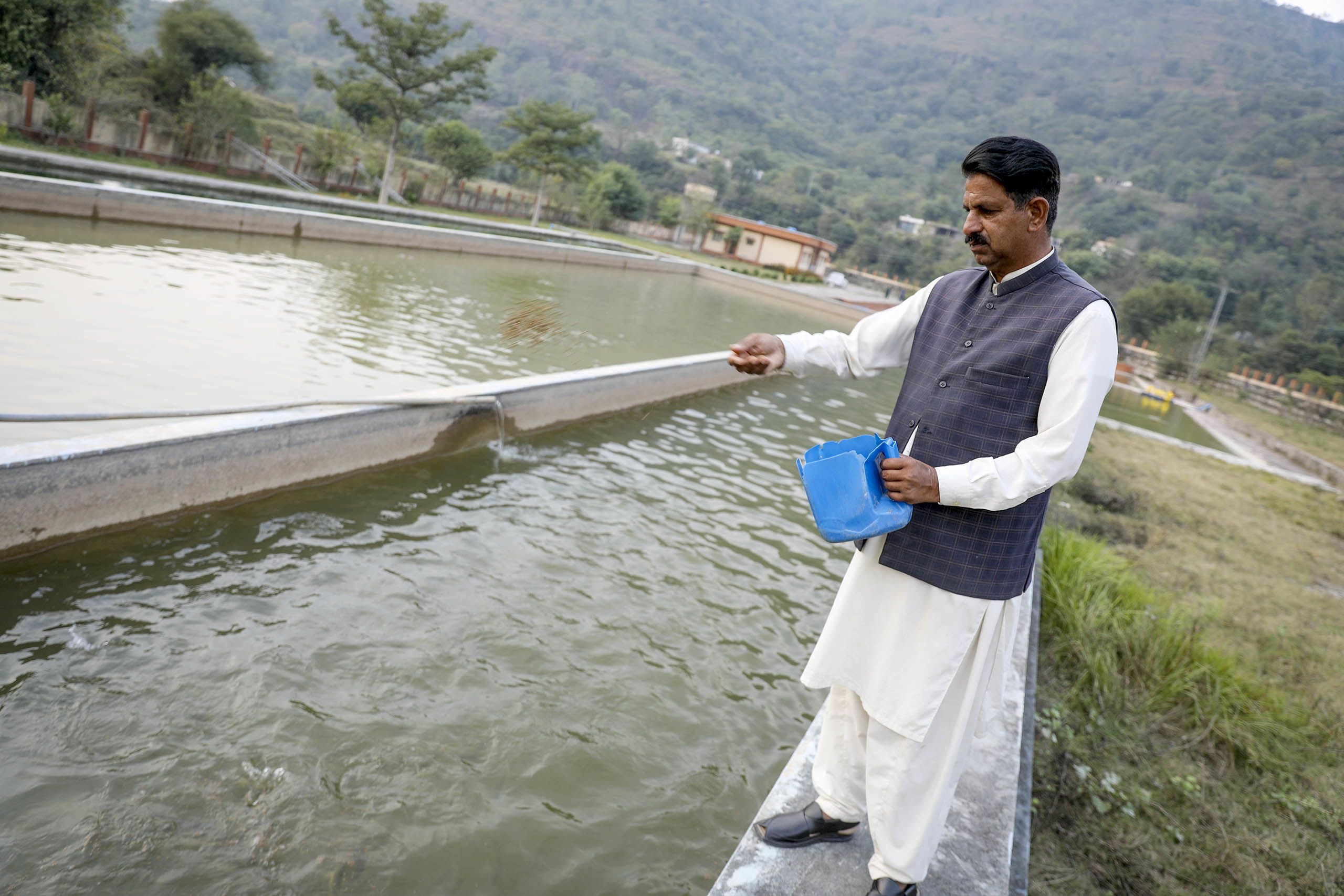
Mohammad Salman, supervisor of the Murli Nullah Gulpur Fish Hatchery.
Mohammad Salman, supervisor of the Murli Nullah Gulpur Fish Hatchery.
That’s been a huge relief to those responsible for enforcing fishing rules. Mohammad Salman, supervisor of the Murli Nullah Gulpur Fish Hatchery, used to experience frequent harassment by the local community, and once he was even held up at gunpoint for objecting to illegal fishing. “Now no such incidents have occurred for a long time because of community awareness,” he says.
River guards who monitor the area for illegal fishing have also seen a turnaround in local residents’ understanding.
“There was a lot of resistance before about the purpose of this project, but now we have been able to raise awareness among the community and convince them about the importance of protecting the fish,” says Muhammad Azrem, a River Guard employed by the Himalayan Wildlife Foundation. “The most striking change is that they themselves call and reach out to us to flag any violations of illegal fishing. The greatest satisfaction I get from my work is the moment I release a fish back into the river and save its life.”
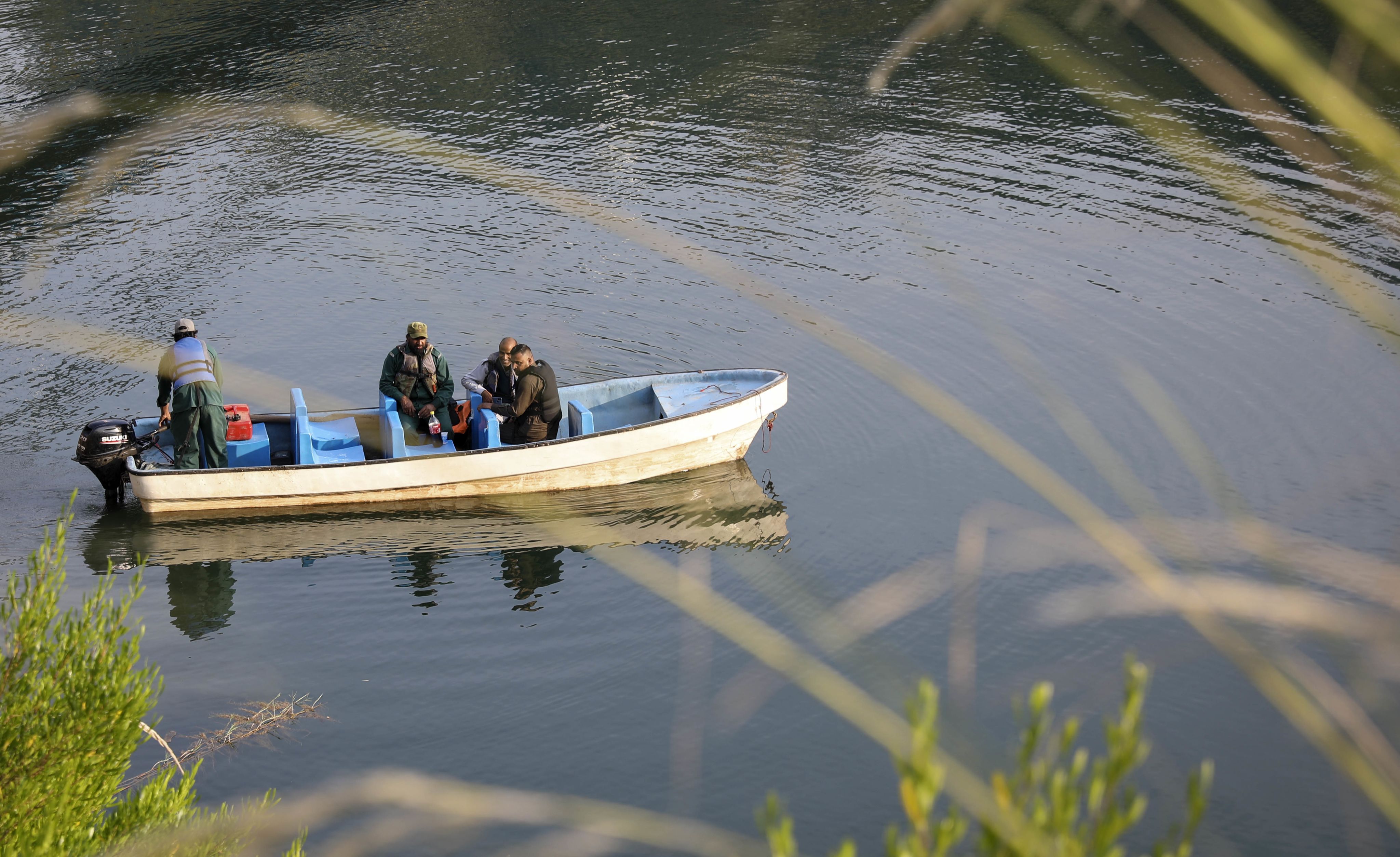
“The greatest satisfaction I get from my work is the moment I release a fish back into the river and save its life.”
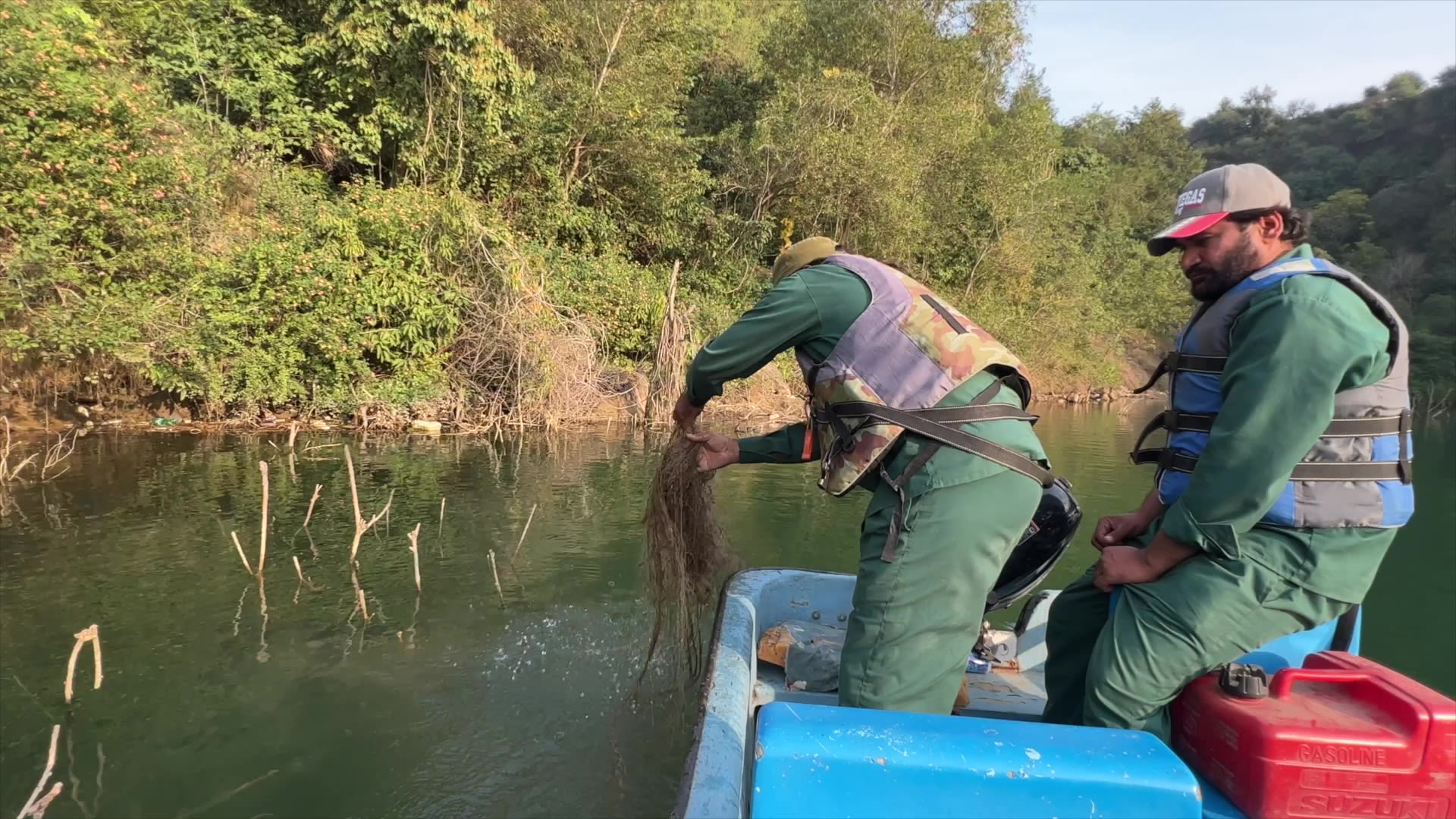

The Gulpur hydropower project, operated by Mira Power Limited, opened on the Poonch River in 2020.
The Gulpur Hydropower Project began operating on the Poonch River in 2020.
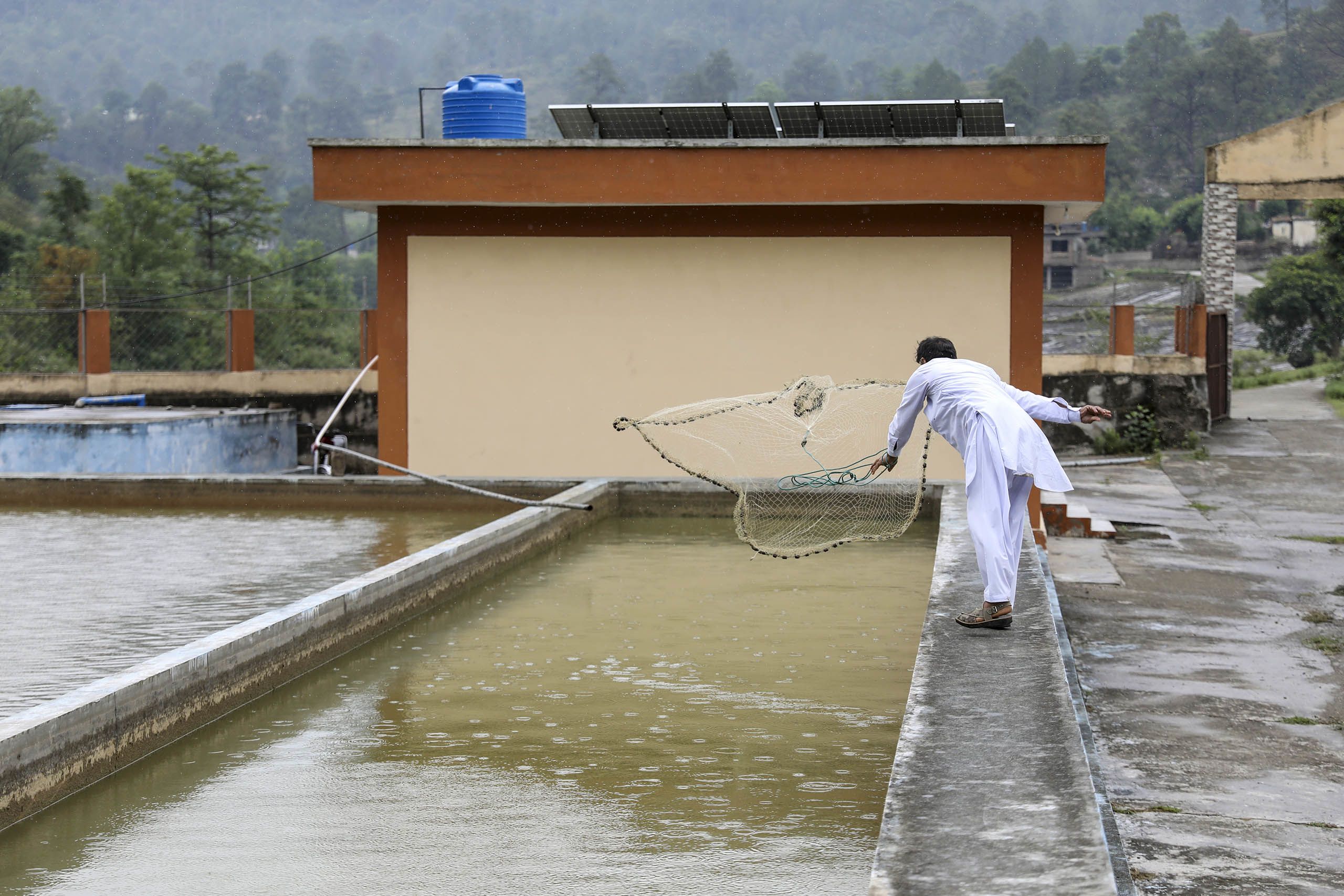
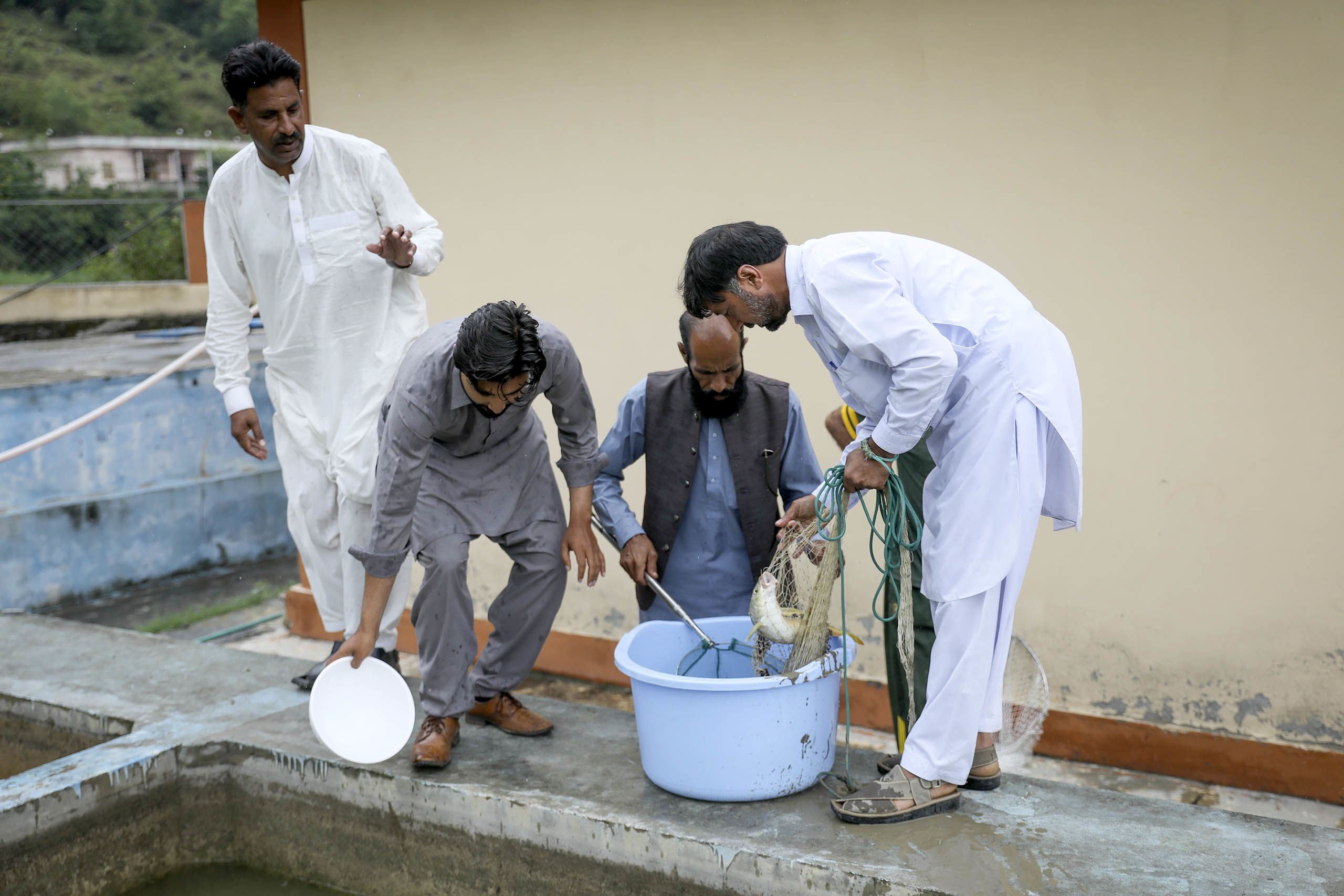
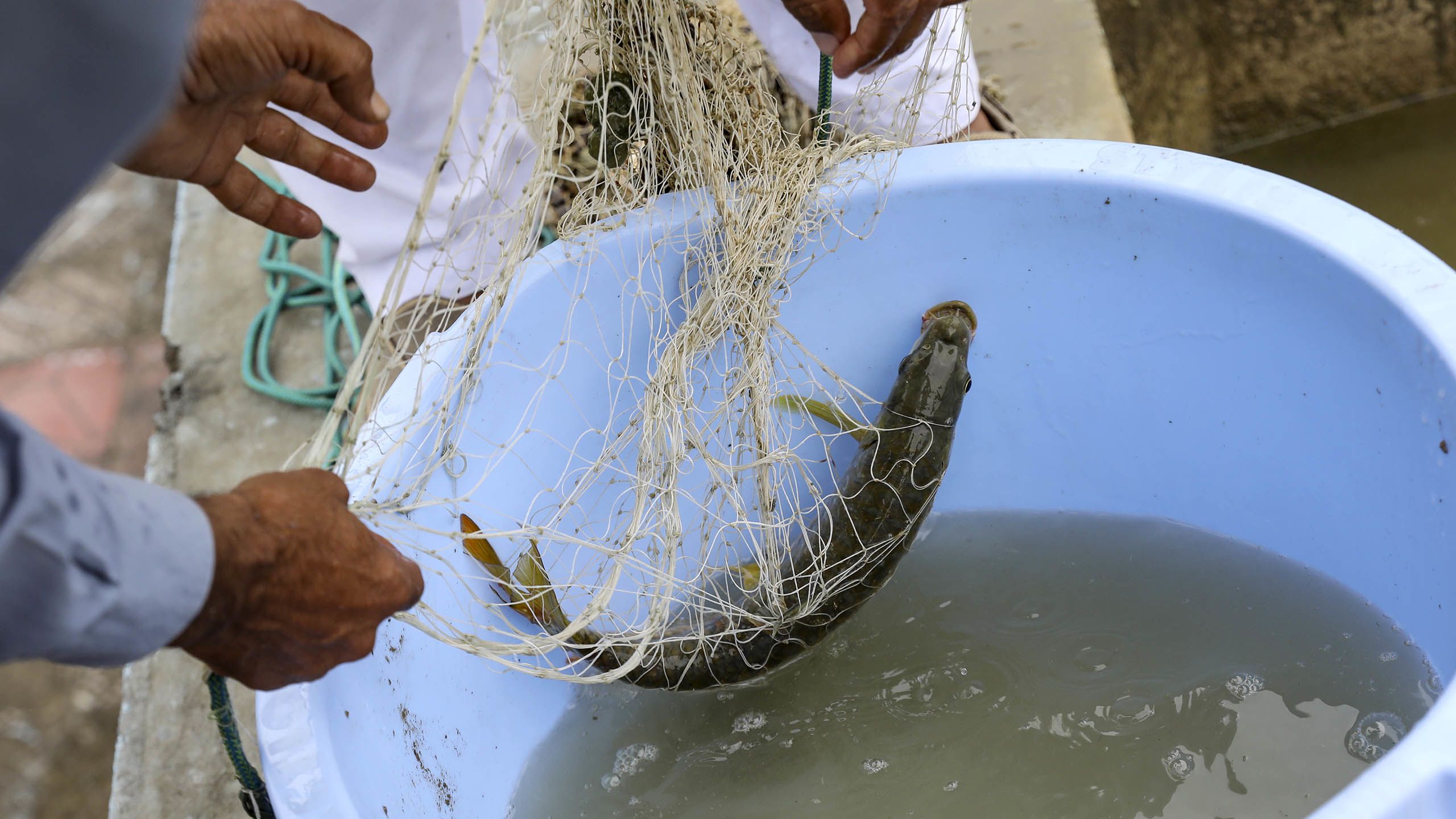
Reaching resilience
Mira Power Limited’s commitment to the project “sets new approaches for all future developers,” says Kate Lazarus, Senior Regional Lead, Environmental Social & Governance (ESG) Advisory Services at IFC. The company’s actions include financing supplemental park staff, equipment, facilities, and logistics to close the existing capacity gaps— including the construction of two park management offices and support to the local Fish and Wildlife Department.
IFC has also established strategies for long-term sustainability. To empower the next generation of local civil servants and scientists to continue working on the project, IFC conducted extensive trainings between 2015 and 2020 for local government agencies to help continue research and build capacity.
These multi-pronged efforts to save the Mahseer have met their goals, according to Anis ur Rahman, CEO, Himalayan Wildlife Foundation, a partner in implementation of the Biodiversity Action Plan. He credits the success not just to the action plan, but also to the concept of an independent monitor to oversee the progress and present its findings to a government-notified management committee headed by the chief secretary of the state government.
The Biodiversity Action Plan offers an innovative, inspiring model for other regions, says Seungnam, from Mira Power Limited. “We are proud to play a central role in bringing diverse parties together to preserve biodiversity while also serving people’s needs. This years-long process has yielded great benefits and we look forward to many more years of collaboration.”

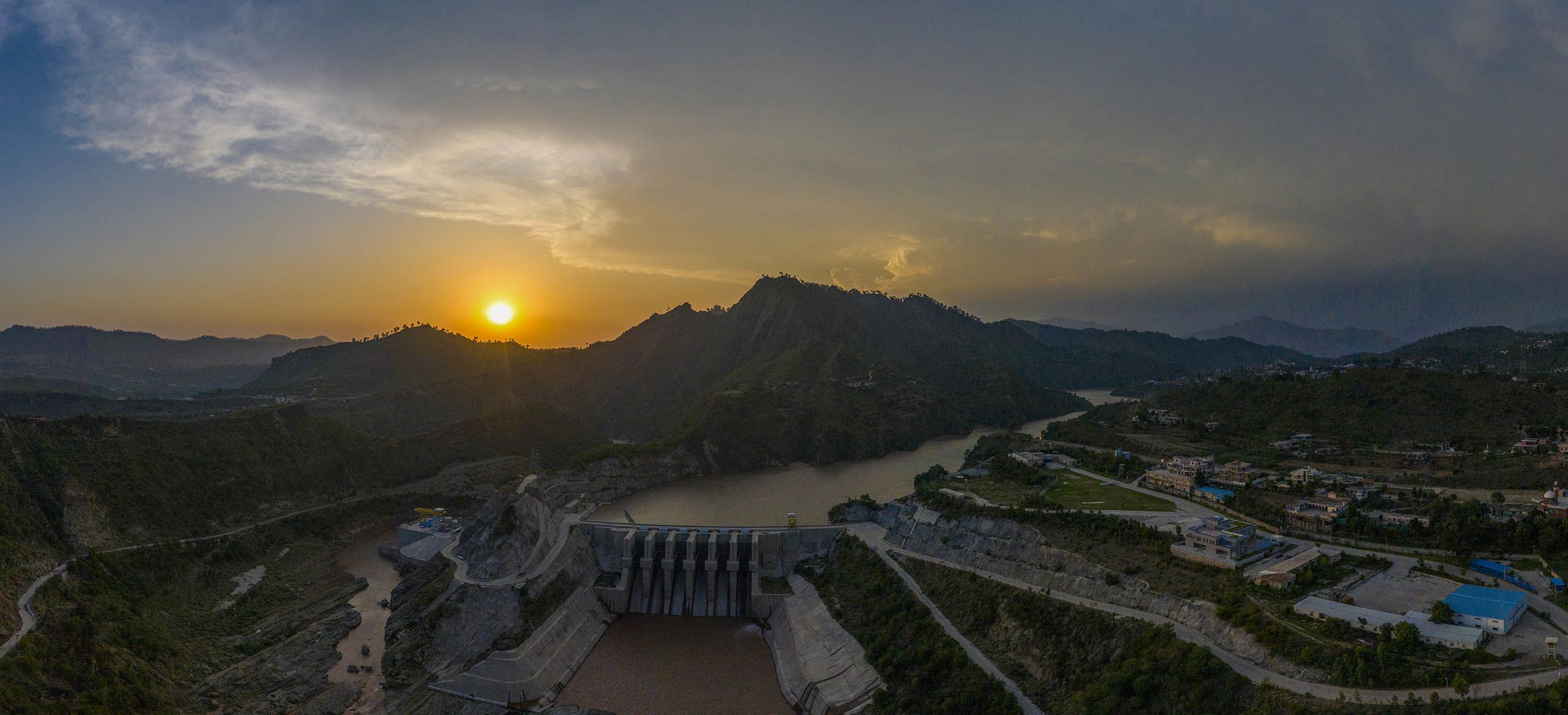
Published November 2023